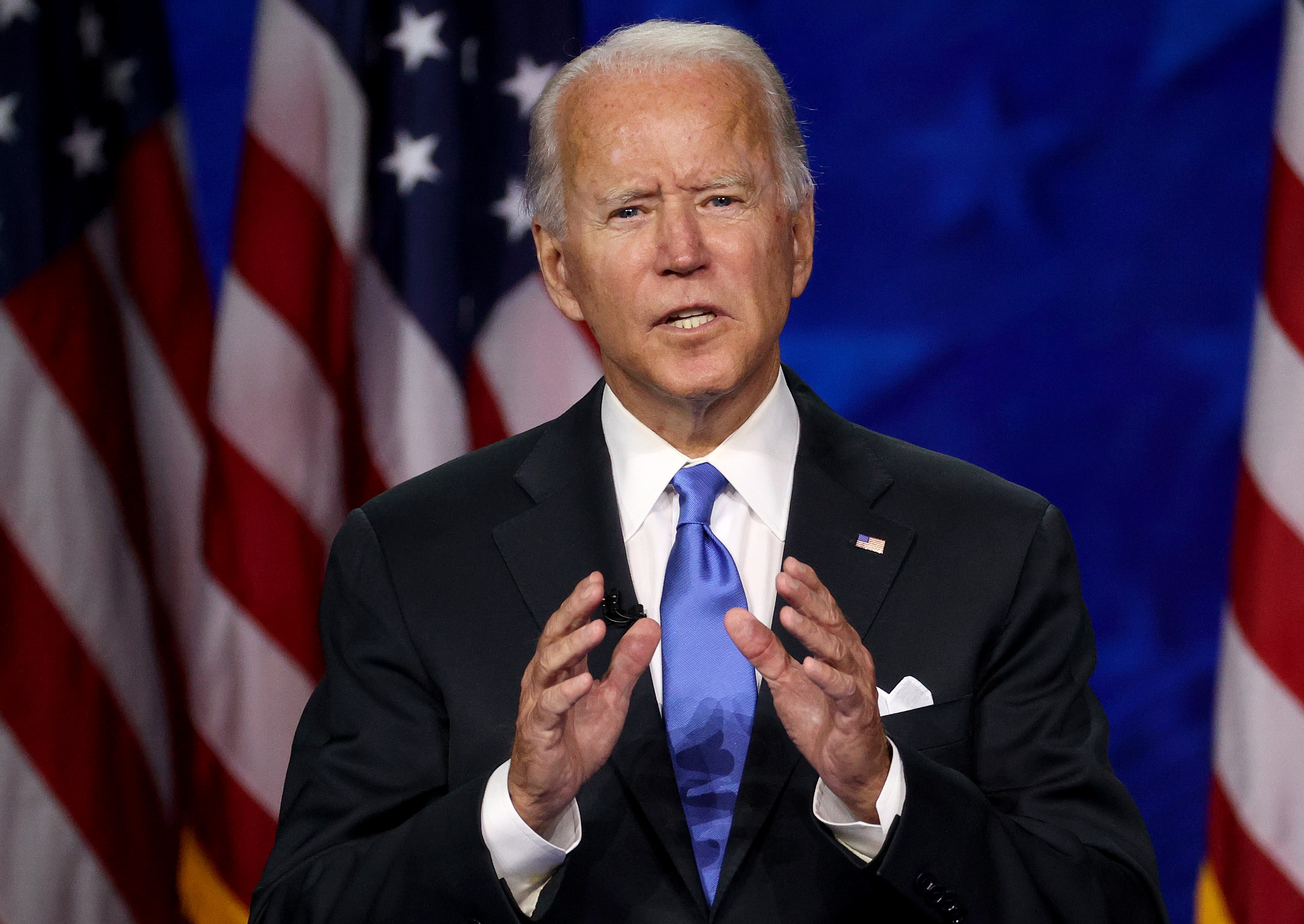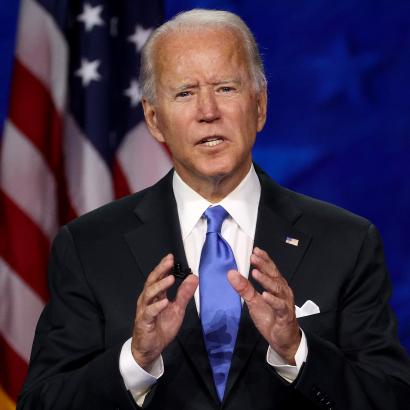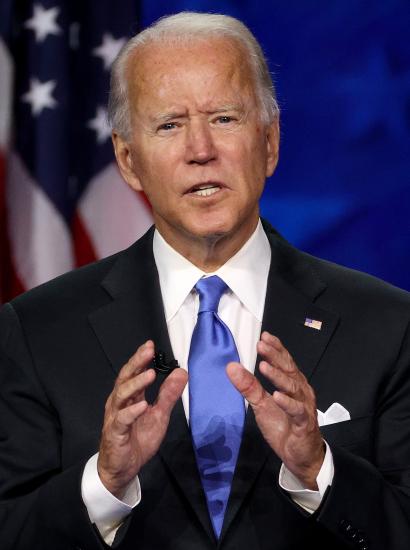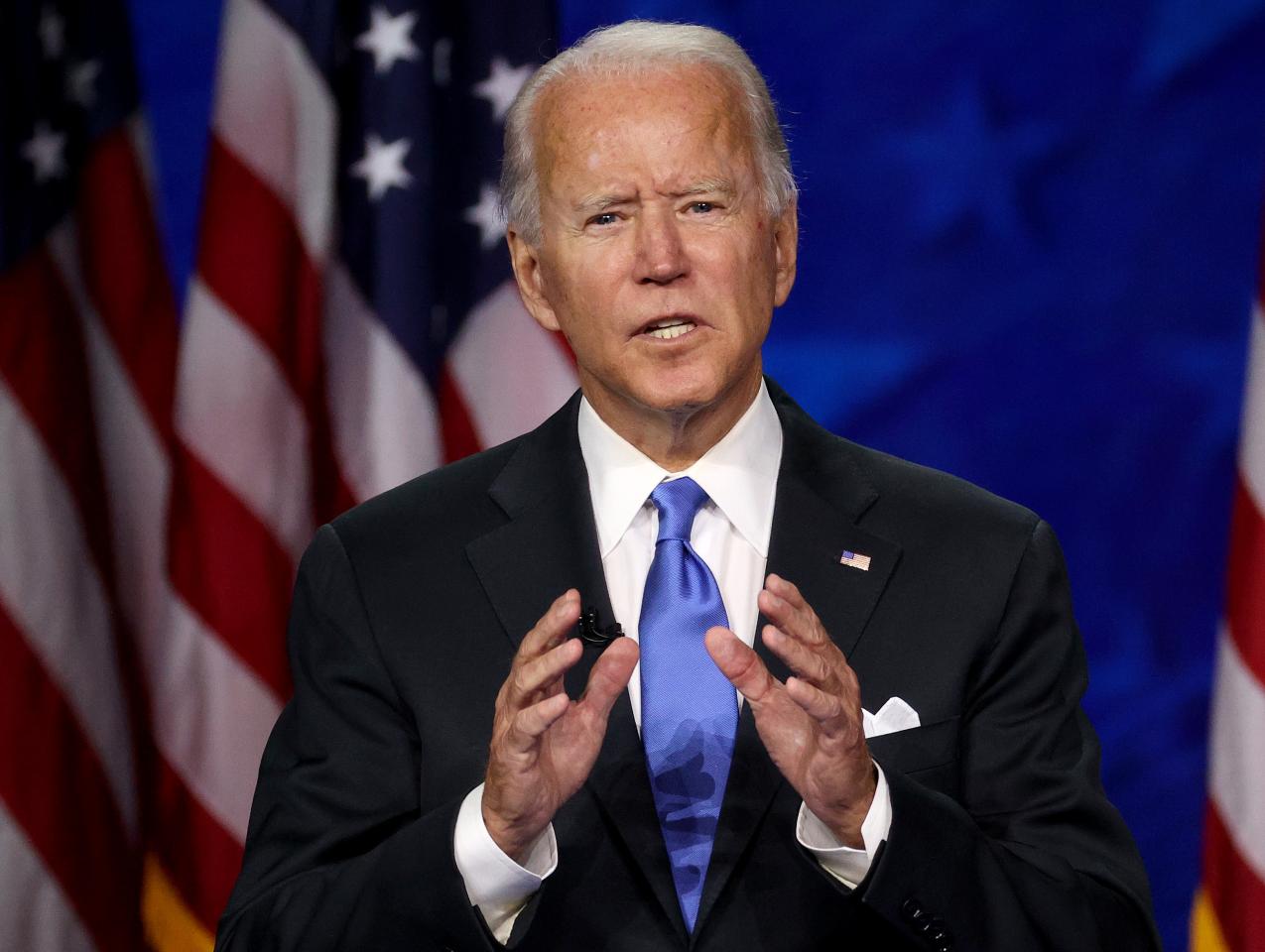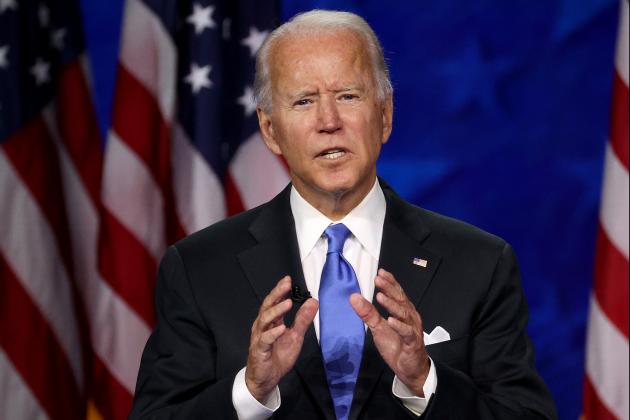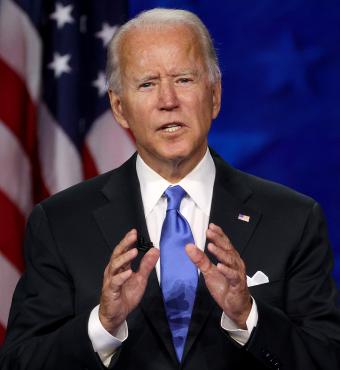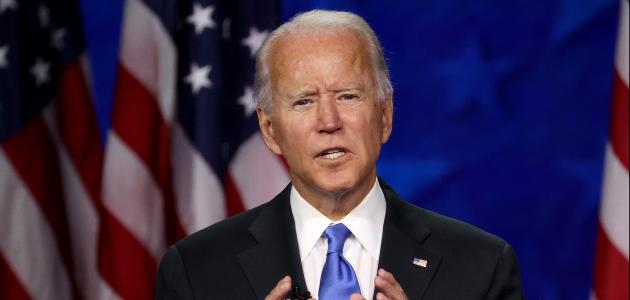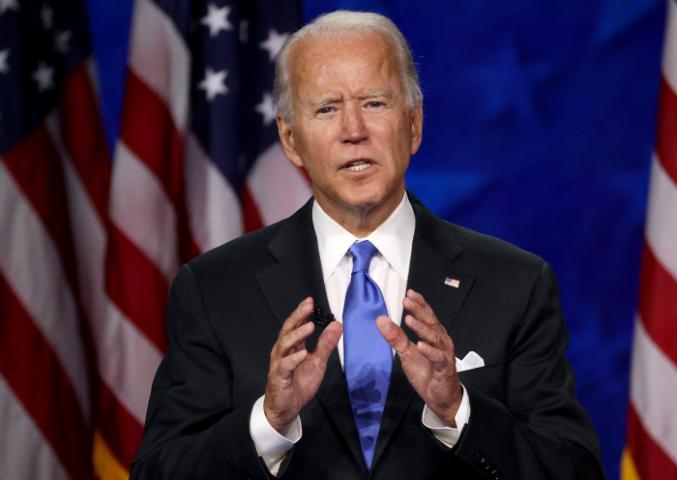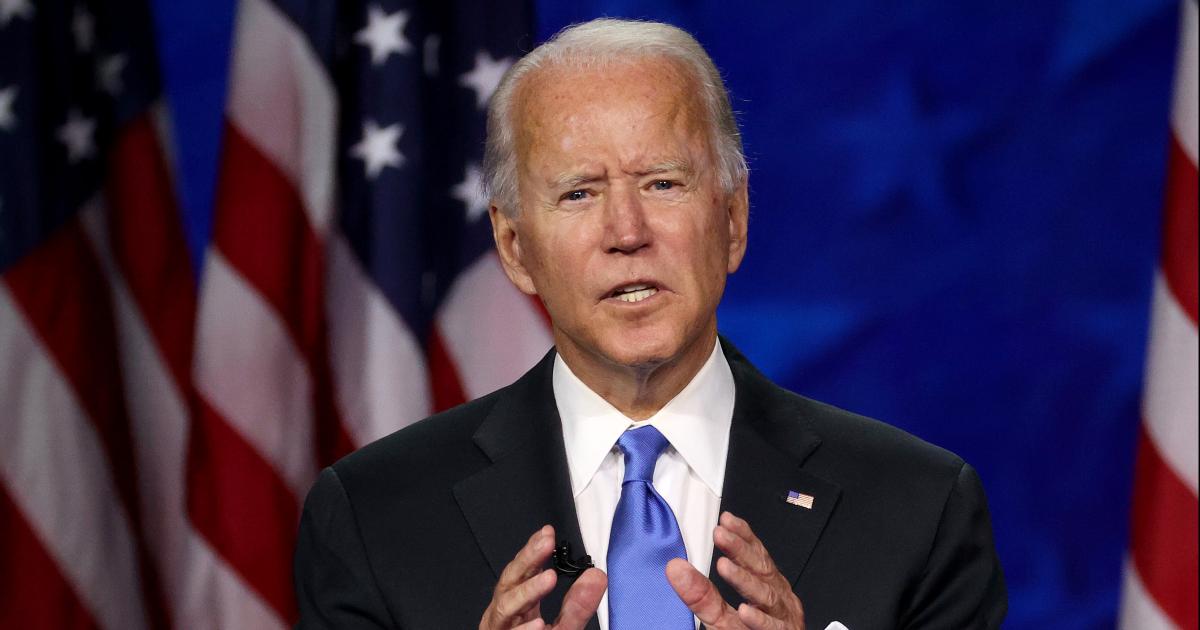- Politics, Institutions, and Public Opinion
- The Presidency
- State & Local
- California
As today marks the one-year anniversary of the Biden presidency, let’s examine the relationship between the new administration and California, one of America’s bluest states, in its fealty to Democratic candidates and causes.
But first, a brief tutorial on the recent history of California and American presidents.
Forty years ago, at this moment, the narrative was the rock-solid bond between the Golden State and Ronald Reagan—along with Richard Nixon, the only Californians to hold America’s highest elected office (Reagan carried California by a margin of 16.8% and 16.2% during his two landslide victories back in the 1980s). Reagan’s dominance spilled over into the last presidential election of the 1980s and George H. W. Bush’s 40-state victory—Bush being the last Republican to carry the Golden State in a 50-state election, albeit by a measly 3.5% margin (Bush won the national popular vote by 7.8%).
Since then, California has been true-blue, with Democrats (easily) victorious in the each of the last eight presidential contests—Biden’s 29-point romp in 2020 in line with previous California performances by Hillary Clinton (in 2016, she carried the state by 30 points) and Barack Obama (as with Biden and Clinton, he too received over 60% of California’s vote during his two presidential wins).
One would think Biden might return the favor by publicly embracing California—or coming often to the West Coast for a morale boost. Instead, the 46th president made just one visit to the Golden State in year one of his first term—in September and on the eve of the statewide gubernatorial recall election, to lend his support to Governor Gavin Newson. Actually, there was more to the Biden visit than stumping for Newsom in Long Beach. The president first stopped by Sacramento to receive a wildfire briefing from local, state, and federal officials (Biden connecting wildfires and climate change to the need to pass his troubled Build Back Better plan).
Otherwise, that’s it for Biden’s physical presence in California in the past 12 months. Just the one visit—the same number of times he’s been to Belgium and Switzerland since taking office.
For those of you who enjoy such trivia, George W. Bush’s first presidential visit to California came in late May 2001, when he addressed Marine Corp servicemen at Camp Pendleton about three-and-a-half months before the 9/11 attacks. Barack Obama visited California two months in his presidency, stopping by an electric-vehicle facility in Pomona to announce more federal funding for the nascent industry.
As for Donald Trump, famously at odds with California policies and politicians throughout his one term in office, his first presidential sojourn to the Golden State wasn’t until March of his second year in office—fittingly, the visit coming a week after then attorney general Jeff Sessions sued California over its state immigration laws.
But Biden’s not Trump; California’s not hostile territory. Still, his lack of time in the Golden State reflects several political realities, the first being America’s changed electoral landscape.
Back in 1993, Bill Clinton came to California just four months into his presidency, making stops in San Diego and the Los Angeles area. He’d go on the visit the Golden State eight times during his first year in the Oval Office—the most to any state outside the DC metro area, including his native Arkansas.
Clinton was not merely visible in California; he went to great pains to show that he felt the Golden State’s pain—in that first presidential visit and amid California’s worst recession since the Great Depression, addressing such local concerns as immigration and the previous year’s rioting in South Central Los Angeles.
Why all the “California Love” back in the day? Credit it to America’s altered presidential landscape after Clinton ended the Reagan-Bush hold on California and America.
In November 1992, Clinton “flipped” California, Colorado, Nevada, and New Mexico—a by-product of H. Ross Perot’s spoiler role in that year’s election and the changing demographics of America’s “New West.” Yes, Clinton’s frequent California visits were fueled in part by a presidential necessity (fundraising), but it also reflected a mild paranoia on the part of the new Democratic administration: as California was new to the blue column (the Golden State went Democratic only once in the presidential elections spanning the previous 40 years), Clinton was determined not to surrender its then 54 electoral votes.
That’s not the case for Biden—not after carrying California by 5.1 million votes back in November 2020 (Biden carried the national popular vote by a shade over 7 million ballots). Politically, at least, he can get away with neglecting the Golden State as opposed to “purple” battleground states in the Upper Midwest).
A second reason perhaps why California has not been a preferred Biden destination: some personnel choices he may now regret.
Any presidential travel to the West Coast—and encounters with local political scribes—brings with it the risk of stories the Biden White House would rather avoid: the shaky performances of the highest-ranking Californians in the Biden administration, Vice President Kamala Harris and federal Health and Human Services Secretary Xavier Becerra.
Harris’s political troubles are well chronicled by now—for the past several months, a drumbeat of bad coverage in which she’s come across as gaffe-prone, a managerial bully, and desperately in need of a course change and image revamp. One sign of vice presidential blood in the water: this Wall Street Journal op-ed by fellow Democrats suggesting that the door is open for Hillary Clinton to ride to her party’s rescue.
As for Becerra, the question is: where has the nation’s highest-ranking health official been amid the pandemic?
Biden’s HHS secretary isn’t front and center at White House COVID briefings. Asked by NBC News why Becerra wasn’t part of a December event at the National Institutes of Health, an aide spun his absence thus: “Secretary Becerra is leading an agency handling some of the most critical issues our country is facing today, including tackling reproductive freedom, fighting to lower prescription drug prices and expanding access to high quality, affordable health care.”
That embrace of a progressive agenda is maybe one more reason why this White House has shied away from California dreaming: California’s leftward advance is in stark contrast to Biden’s policy failures.
In Sacramento, Newsom champions the likes of slavery reparations for Black Californians and expanded health care for the state’s undocumented population—both attainable goals, thanks to Democratic supermajorities in both chambers of the state legislature. In the nation’s capital, Biden and his fellow Democrats can’t deliver on the progressive wish list (voting reform, the Green New Deal, scuttling the Senate filibuster). While Newsom has used his executive authority to keep California in a state of COVID-related emergency for the better part of two years now, Biden’s exercise in executive muscle flexing—a private-sector vaccine mandate—was struck down by the Supreme Court.
It’s not as if the new year won’t offer Biden opportunities to come to California—in the fall election, the Golden State may be one of the few locales where an embattled Democratic Party has an opportunity to flip Republican-held congressional seats. But given the long flight and a constant reminder, from within his cabinet, that California can be a source of political headaches, maybe Biden continues to keep his distance.
If so, so much for California on his mind.







